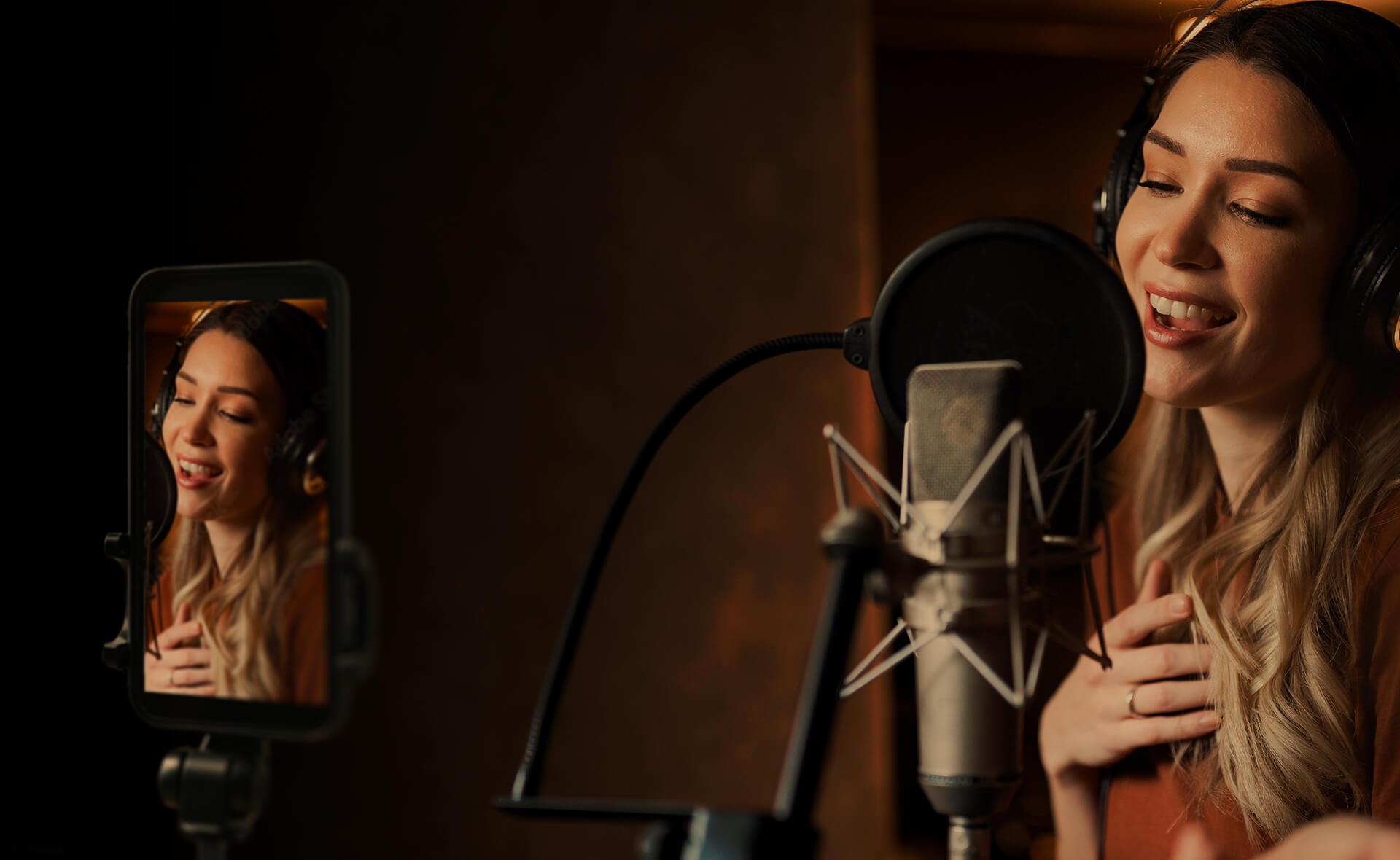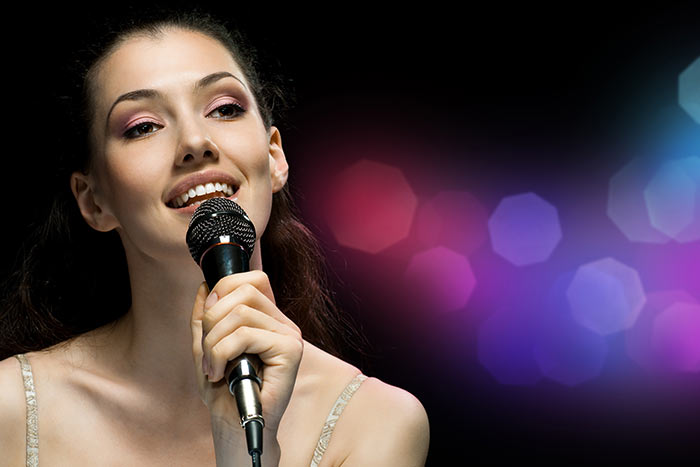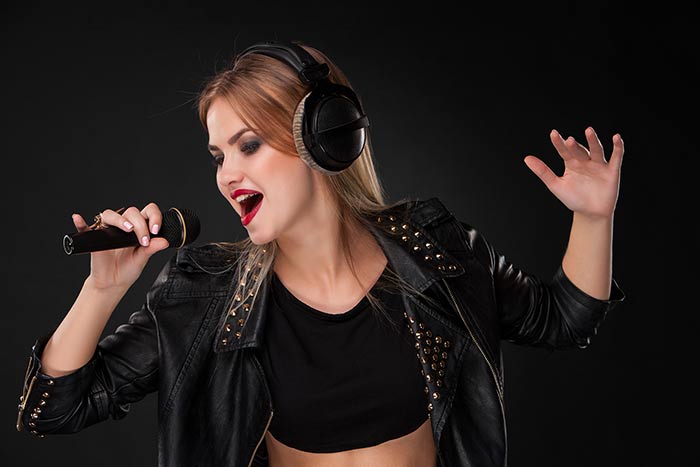The next most important tool you will use as a singer apart from your voice is a microphone. Choosing the best microphone for singing can be tricky, as there are so many out there on the market and not all of them will fit the same purpose. Or even suit the sound of your voice. Just like your vocal, each microphone will have its own specific tonal qualities and best applications. This is an important choice to make so your microphone serves your voice and requirements the best.
Consider the purpose of your microphone
How will you use your microphone? Are you looking for something to use live on stage or in the studio? Two of the most common types of microphones for singing are dynamic and condenser.
Dynamic microphones are best suited for live applications. They are rugged, directional and less sensitive to quieter sounds, which means they’ll have a great response, without catching too much room noise or quieter noises coming from your mouth. A great option for live settings is a Shure SM58 and it’s also very reasonably priced.
Condenser microphones are a favourite in studio applications! They are far more sensitive and easily damaged, so are not usually suited in a live setting. In the studio, however, they will help you capture more nuance ins your voice, and, often, a larger frequency range too. A popular all-rounder is the Rode NT1A condenser microphone.
Polar Patterns, Frequency Response and Other Technical Jargon
If you have looked at technical specification of any microphone, you will have likely noticed terms like ‘polar pattern’, ‘frequency response’ and more. So, what exactly do they mean?
Polar pattern refers to the microphone’s sensitivity to sounds arriving from different angles. Cardioid, hypercardioid and supercardioid are among the most popular polar patterns for vocalists and pick up sounds predominantly from the front of the microphone. Ribbon or figure of eight polar pattern will pick up sounds from both sides of the mic, whereas an omnidirectional microphone will be sensitive to sounds from all angles. As a solo vocalist, you will likely need a cardioid microphone, although there are some available with variable polar patterns, too. The reason why you’d want a mic that picks up sounds from the front is to avoid capturing any unnecessary noise or room ambience from other angles.
Frequency response refers to the frequencies your microphone will be the most sensitive to. Our audible frequency range is between 20Hz and 20kHz and many condenser microphones will pick up frequencies within this range, too. When you are looking at a frequency response graph, some frequencies will be reduced or even cut, and some will be boosted. This is one of the contributing factors to the different sounds of each microphone. For example, boosting frequencies around 180Hz – 200Hz for men and around 400Hz for women may result in a warmer sound.
Self-noise refers to the noise generated by the mic itself. As with all electrical equipment, it will generate some level of noise by being operated, so you want to choose a microphone with low self-noise, as this will interfere with your recording the least.
Sensitivity is used to describe the amount of acoustic pressure required to turn sound vibrations into electric voltage. In other words, the higher the sensitivity, the less amplification your microphone will need to bring the sound signal to a good level.
Phantom power is designed to power certain microphones, such as condensers. Dynamic microphones will work without it. Most audio interfaces and mixing desks will have a phantom power option, usually marked as +48V or P48.
Do a Voice Test to Find The Best Microphone for Singing
What’s the easiest way to determine the best microphone for singing? Try them out! Most expensive microphones won’t always be the best, it’s about the one that works best for your voice and highlights its unique qualities. If trying out a microphone in person isn’t an option, listen to reviews, recordings and research the microphones used by your favourite vocalists. This is especially useful if you have a similar tone to them, as it will give you an idea of which microphone will be most suited to you too. The right choice will be as unique as, indeed, are each of our vocals.
By this point, you know how to choose the best microphone for singing…Let’s talk accessories!
Use a Pop Shield
A pop shield is a great tool for a recording setting, as it will help to eliminate plosives that create a lot of air pressure and often ruin a perfectly good recording. Pop shields also help you keep a good distance between you and the mic for a consistent, clean recording.
Consider Using a Shock Mount
Another useful accessory in your studio kit is a shock mount. This will work a treat with condenser microphones, keeping them safely in place and isolated from vibrations coming from the mic stand. You won’t need one for a dynamic microphone, as they will be less sensitive to quiet vibrations than condenser models.
USB or XLR?
Finally, let’s talk connectivity! Most microphones will have an XLR connection, so if you want to record sound directly into your computer software, you’ll need an audio interface to convert the signal from analogue to digital. USB microphones are a convenient option, as you can plug those straight into your laptop. Having said that, an XLR mic has its benefits too, as audio interfaces help to reduce the CPU load on your computer. You will also be unable to choose your preamps for a USB microphone, which can really affect your sound. However, for a user-friendly and budget option, a good USB mic will work just fine. As long as the option you choose helps you get the best quality recordings and makes the process enjoyable and convenient, that’s the one that will be best, unless you have more specialist requirements.
Do You Want to Learn The Best Vocal Mic Techniques From Industry Professionals?
It’s not just about finding the best microphone for singing, it’s also important to know the tips and tricks to get the best quality performance! At S&C Music we offer adult singing lessons in a judgment-free, encouraging environment that will help you unlock your singing potential. We will show you how to make the most of your voice, highlight its best qualities and teach you the miking techniques used by world-class singers on-stage and in the studio. We have one to one lessons available at our stunning premises. We teach a range of styles and techniques from musical theatre and classical to jazz, pop, rock and blues.











